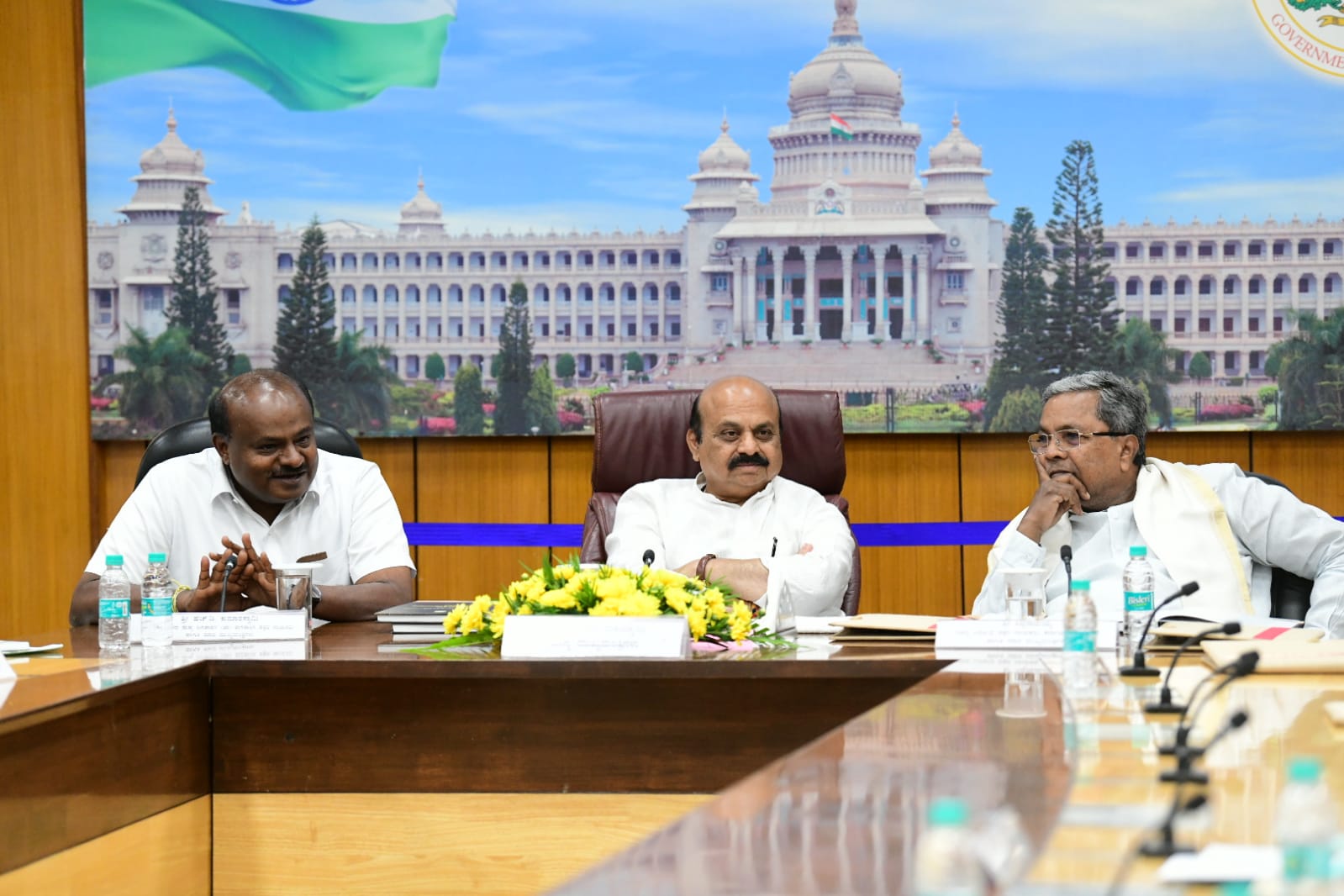The BJP government is looking to implement the Justice Nagamohan Das Commission recommendations to hike reservations after two and half years.

All party meeting chaired by Chief Minister Basavaraj Bommai on Friday. (Supplied)
With Assembly elections barely months away, the Karnataka government has given in-principle approval to hike the reservation for Scheduled Castes and Scheduled Tribes (SC/STs) in the state.
In an all-party meeting on Friday, chaired by Chief Minister Basavaraj Bommai, the BJP government agreed to implement all the recommendations of the Justice Nagamohan Das Commission report two and a half years after it was submitted.
The report urged the government to increase the reservation for SCs from the existing 15 percent to 17 percent and for STs from 3 percent to 7 percent based on their population and socio-economic status.
Implementation of the increased reservation would breach the 50-percent ceiling on reservation set by the Supreme Court under ordinary circumstances.
The decision to implement the Justice Nagamohan Das Committee’s recommendations comes at a time the BJP government has been facing reservation agitations by various communities — including Panchamasali Lingayats and Valmiki — for increased quota.
With the Union government’s decision to introduce 10 percent reservation under EWS (economically weaker section) category for socially forward communities, practically all communities in Karnataka are eligible for benefits under reservation.
Excluding the EWS quota, castes and communities were classified into seven categories for reservation in Karnataka.
SCs get 15 percent, STs 3 percent and 32 percent is reserved for OBCs and religious minorities.
The 32 percent is distributed among Category 1 (4 per cent), Category 2A (15 percent), Category 2B (4 percent), 3A (including Vokkaligas and subcastes, 4 percent) and 3B (including Lingayats and 42 subcastes, 5 percent).
Except for SC/ST and Category 1, all other categories are restricted by the “creamy layer” clause and 8 lakh income limit.
Apart from religious minorities, reservation is extended to 101 scheduled castes, 50 scheduled tribes, and 207 Other Backward Classes (OBCs).
Socially forward classes or upper castes like Brahmins, Arya Vaishyas, and Mudaliars are covered under the EWS quota. In all, the state’s reservation is already at the 50 percent ceiling, excluding the Centre’s push for the EWS quota.
To implement the increased SC/ST reservation, Karnataka will have to pass a resolution via the legislature and compel the Central government to add its reservation law to the 9th Schedule of the Constitution, like Tamil Nadu has done.
“We have given in-principle approval to implement recommendations of the Justice Nagamohan Das Commission. We will take a call in the next Cabinet meeting and — if need be — bring a resolution in the legislature in December for approval. The report also recommends special additional educational funds for SC and STs, and we have accepted that as well,” Law and Parliamentary Affairs Minister JC Madhuswamy told reporters.
Justice Nagamohan Das told South First that the 50 percent cap on reservation could be relaxed under extraordinary circumstances.
“SCs and STs in Karnataka, when compared to other communities, live in very poor conditions. Their socio-economic status is far weaker than others. The highest concentration of unemployment and illiteracy are among SC andSTs. Most don’t own land or property. Take for example government jobs. You will see SCs and STs beyond their entitled quota of 18 percent in Group D jobs because those jobs include sanitation work. But despite entitlement, there are barely 8 percent of them in Group B and even fewer in Group A jobs. That gap in social justice needs to be filled,” Das said.
Other than increased reservation, the commission in its report also suggested the exclusion of the creamy layer, internal reservations among STs and SCs, and additional focus on education and reservation in the private sector.
While the 2011 population census stated that SCs formed 17.15 percent of Karnataka’s population and STs made up 6.95 percent, a socio-economic survey undertaken by the Siddaramaiah government in 2017 — whose findings are still in cold storage — painted a different picture.
Referred to as the “caste census”, the report was aimed at helping the government form policies to assist the most backward among the SCs, STs, and OBCs through ways of internal reservation. Unofficial numbers from the Caste census puts SCs close to 20 percent and STs about 6 percent.
On Thursday, the Leader of the Opposition in the Karnataka Assembly, Siddaramaiah, insisted that the government hike reservation for SCs and STs.
The demand was reiterated by Rahul Gandhi during his corner meeting at the end of the day of Bharat Jodo Yatra on Thursday.

Jul 26, 2024

Jul 26, 2024

Jul 26, 2024

Jul 26, 2024

Jul 26, 2024

Jul 25, 2024